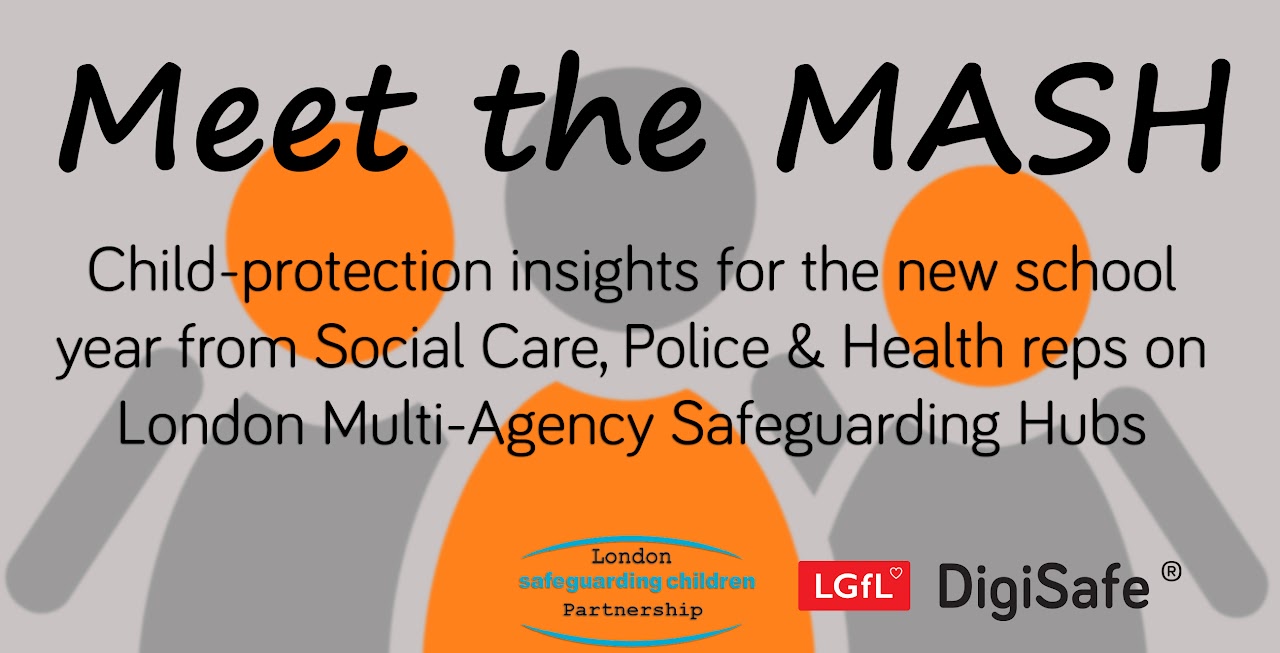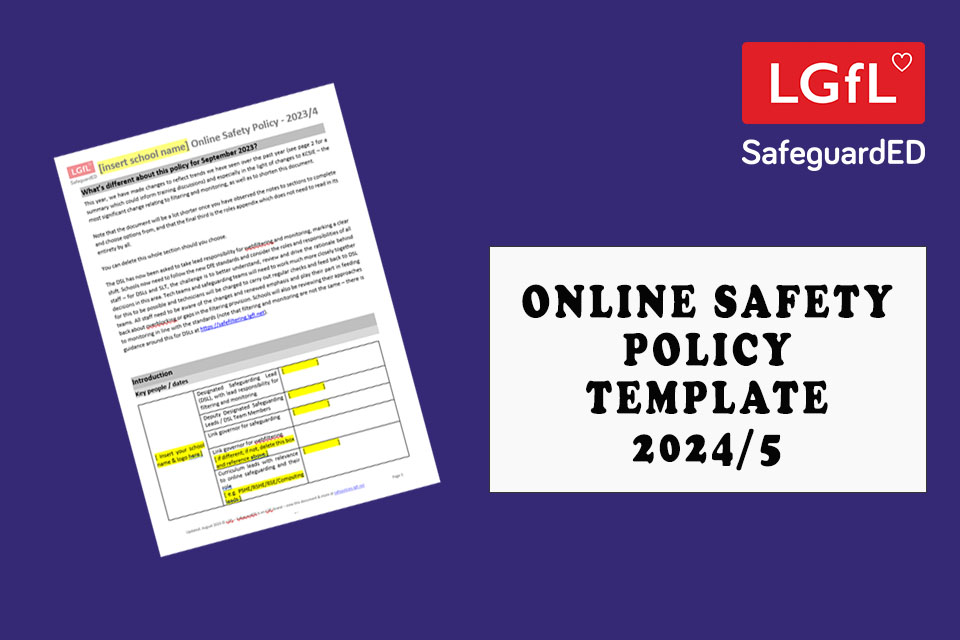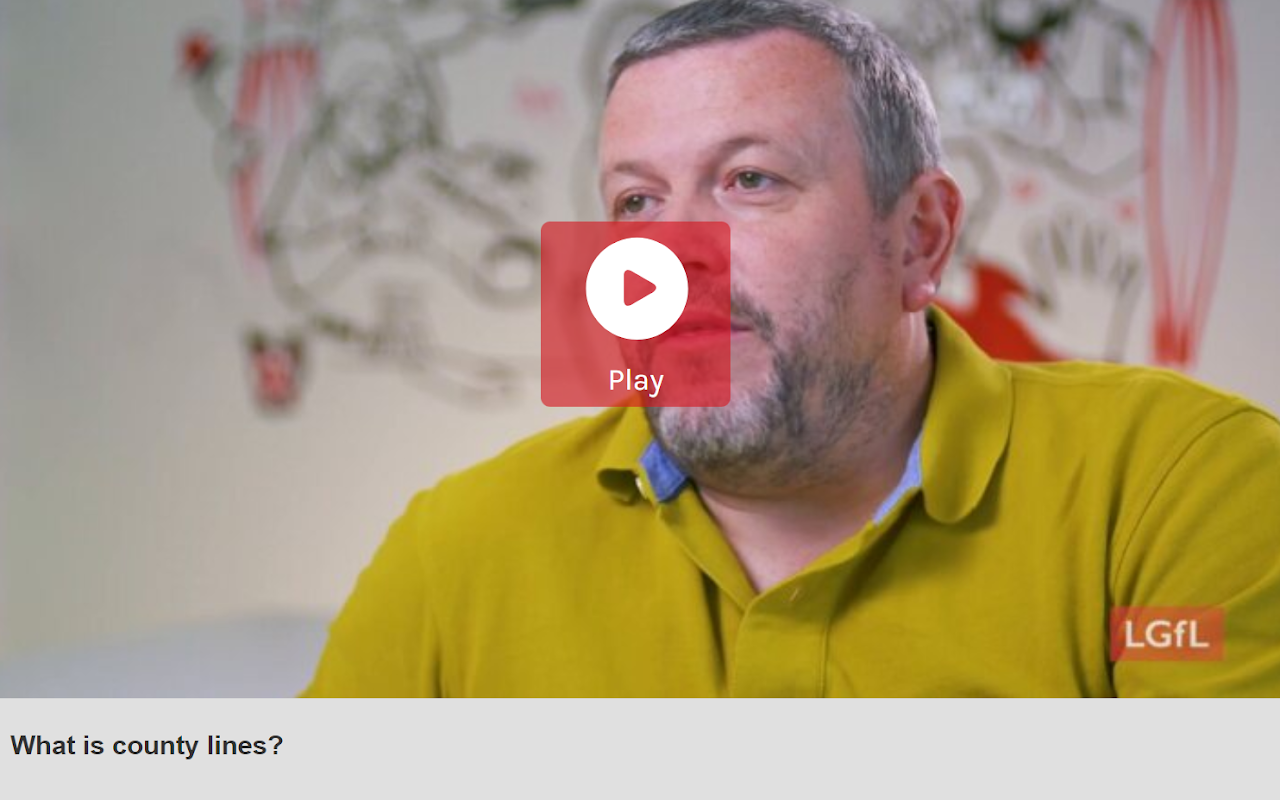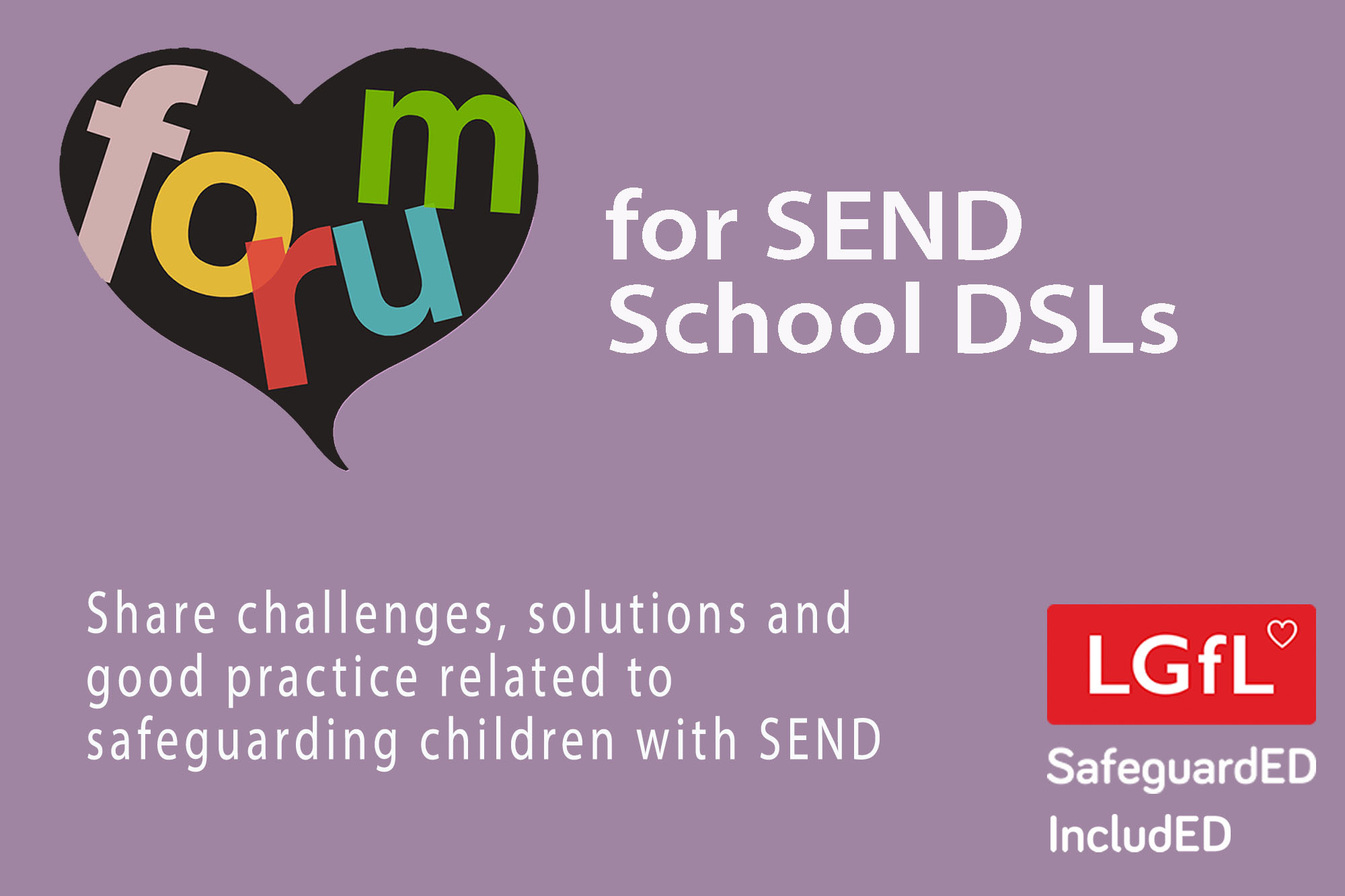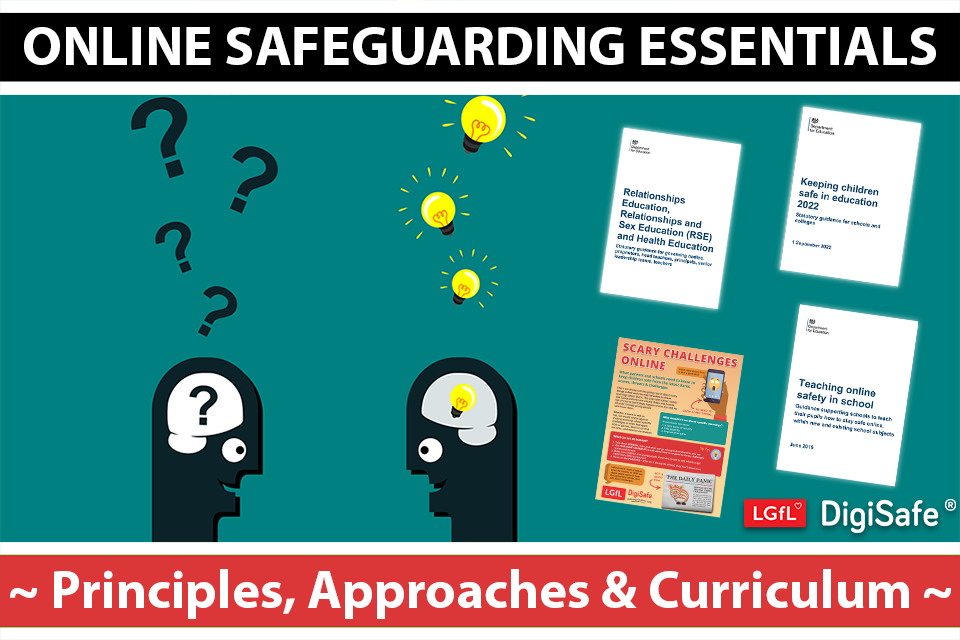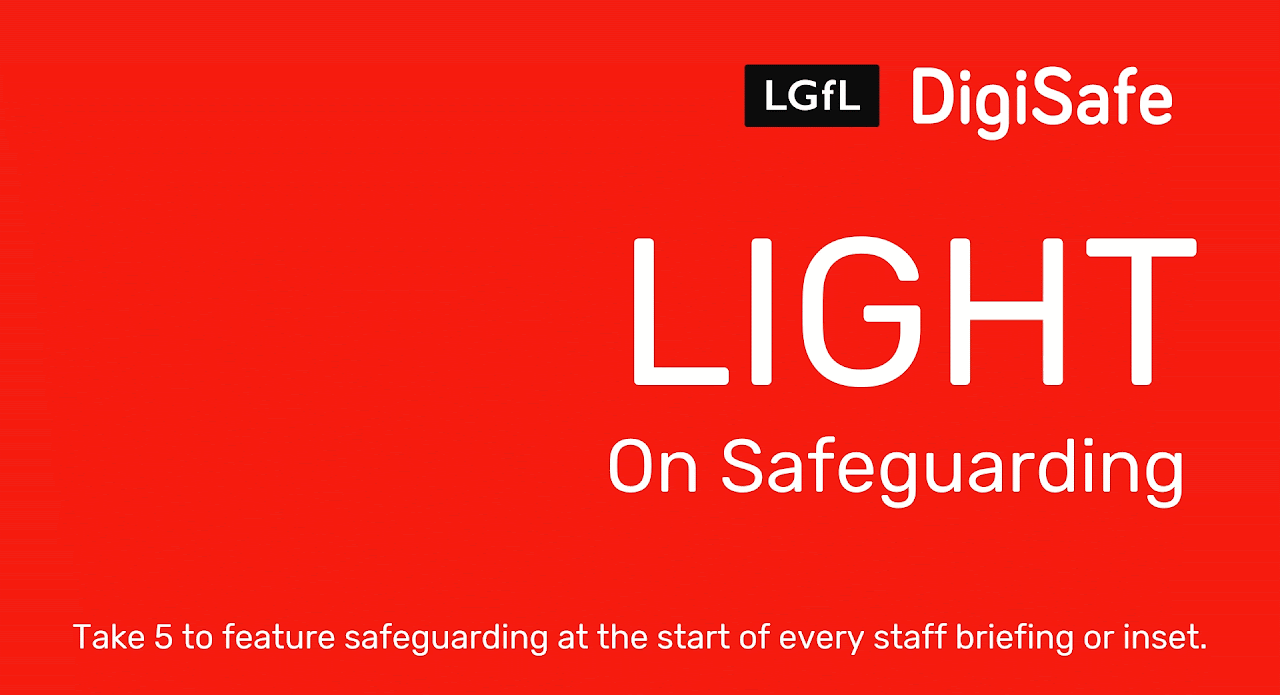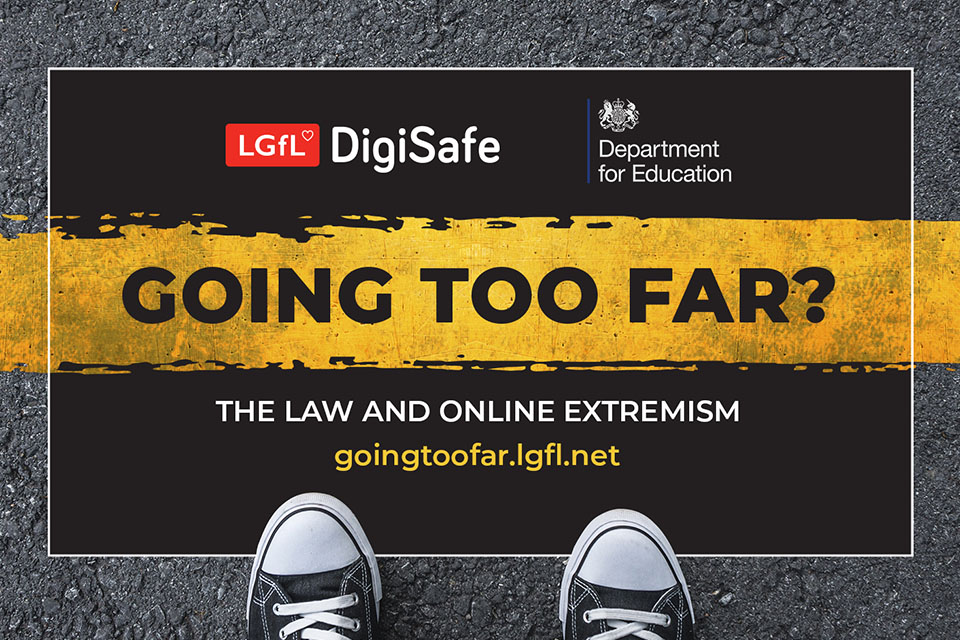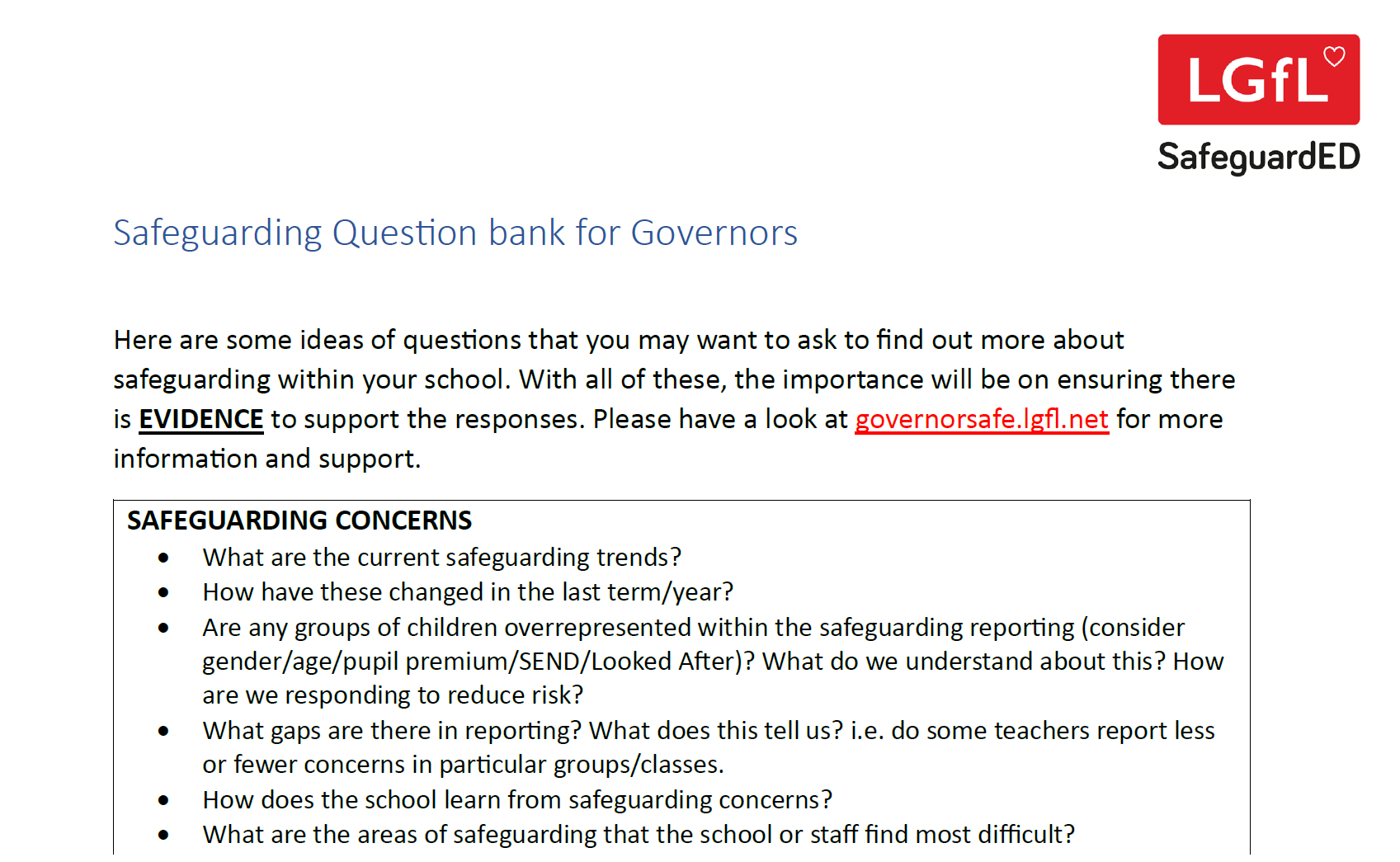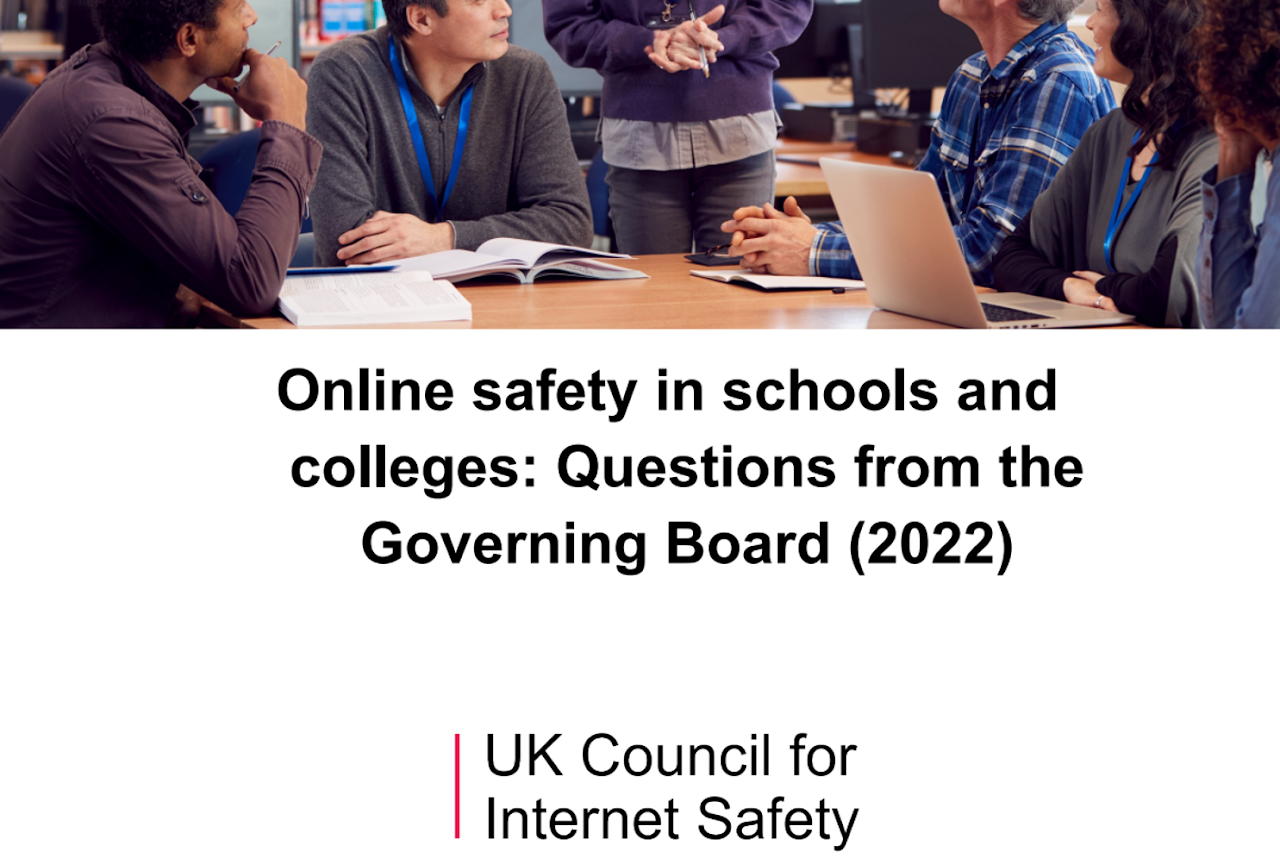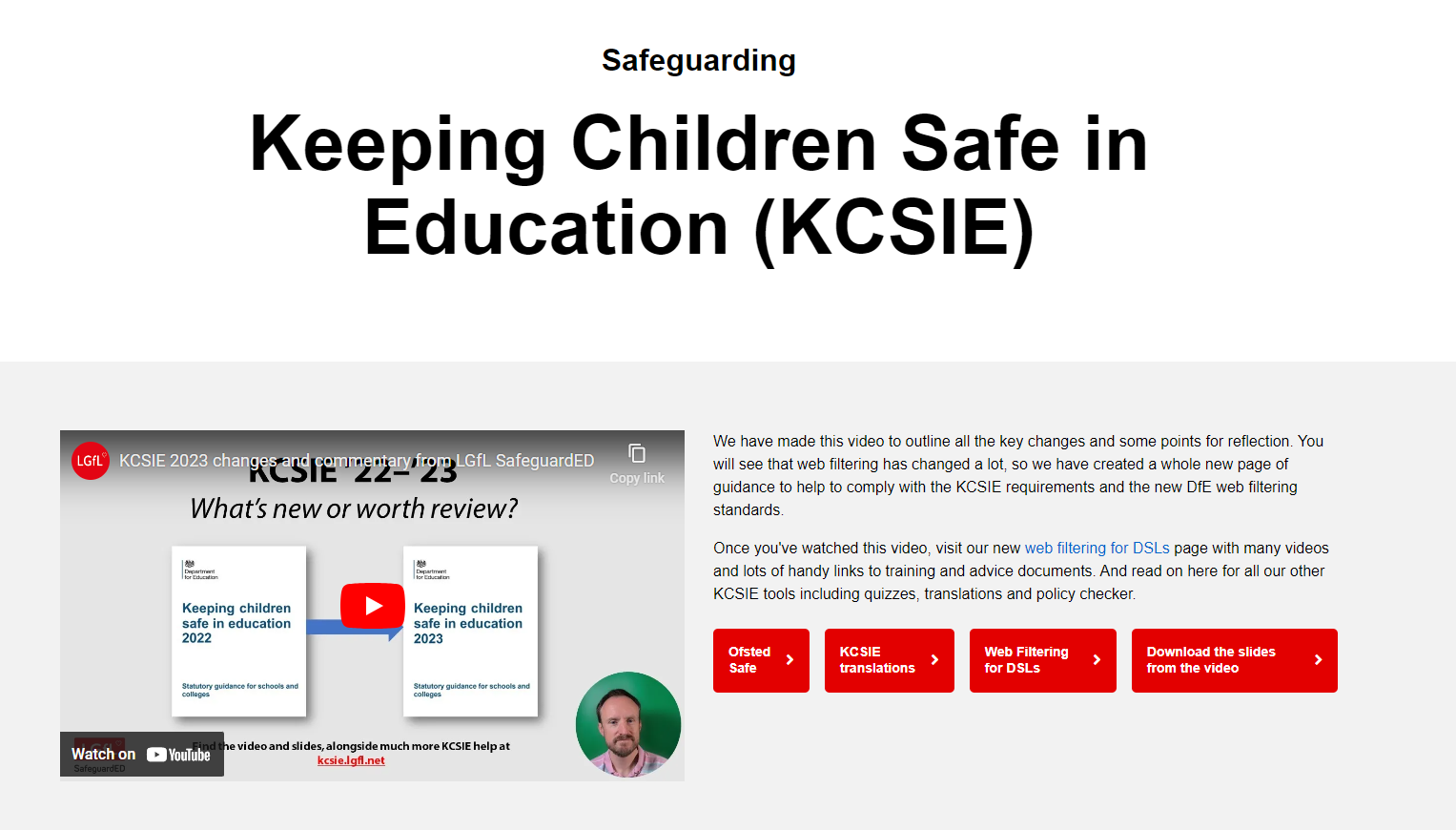Safeguarding
Ofstead School Inspection Handbook
*** September 2024 Update ***
As a result of Ofsted's response to The Big Listen, we anticipate changes to the inspection of safeguarding in schools. We will update these pages as soon as more details are unveiled.

What does Ofsted say about inspecting safeguarding?
Three key Ofsted documents relate to safeguarding - this page focuses on the safeguarding elements of the Ofsted School Inspection Handbook. You may also wish to refer to the Education Inspection Framework and Inspecting Safeguarding in early years, education and skills (all about safeguarding so worth reading in its entirety).
Remember that Keeping Children Safe in Education and other statutory documents (e.g. Working Together) should be your primary safeguarding guides, and although we make suggestions here, you should at all times aim for a culture of safeguarding, not follow a tick-box approach.
This page shows a selection (not exhaustive - trying to pick out things that are less obvious and not already covered on our Inspection videos page) of safeguarding-related excerpts from the Ofsted School Inspection Handbook. For each screenshot, we have added highlights, reflective questions and resources to support your journey to keeping children safer.


Ask Yourself/Colleagues:
- Are you familiar with 'Working Together to Improve Attendance'?
- What is your school's approach to maintaining high expectations around pupil absence? How do you ensure all staff share this approach?
- What strategies have you implemented to address where there are pupils who are persistently absent?
- How do you communicate your expectations with regard to attendance to parents/carers?
- Are your safeguarding and attendance policies and procedures aligned, to identify where attendance issues are a safeguarding concern?
- Do you monitor attendance regularly? Who does this? Do you have clear response procedures to absenteeism?
- How do you share information with your governors about pupil absence?



Ask Yourself/Colleagues:
What steps have you taken to develop a culture of safeguarding at your school?
How can you show it is embedded holistically as part of a whole school approach and not just a tickbox exercise?
How have you collected evidence of your culture? What do stakeholders tell you?
Is the safeguarding culture as described in your Safeguarding policy, reflective of day to day practice?
How do you demonstrate each of these points, as a minimum?
What is the impact of your safeguarding culture? How do you know it is effective?
What agreements/measures are in place to share information effectively with key agencies e.g. Children's Services or when children transition to the next setting?
Helpful Resources & Support:


Ask Yourself / Colleagues:
What steps have you taken to ensure staff are confident in delivering statutory RSHE in line with DfE guidance?
How have you captured pupil voice and responded to concerns to ensure pupils:
Feel safe and listened to?
Feel that the curriculum is appropriate and effective?
Have an understanding of the Equalities Act and protected characteristics?
Are aware of reporting channels, both at school and beyond?
Can you evidence that your governor(s) are strategically challenging safeguarding across the school?
Helpful Resources & Support


Ask Yourself / Colleagues:
What steps have you taken to ensure staff are confident to challenge child on child abuse and not dismiss discrimination, bullying and sexual harassment as banter?
How is this reflected in your policies? Can you show that policy reflects (and informs) practice?
Can you demonstrate that all pupils have signed an updated AUP? ...and staff, volunteers, governors?
Are your pupils confident that inappropriate behaviour will not be tolerated - is this message consistent across the curriculum and in practice?
How are you addressing concerns of pupil absence? What are your strategies? How are you monitoring the effectiveness of these?
How are governors supporting the prioritisation of achieving high attendance levels for all pupils?
Helpful Resources & Support

Ask Yourself / Colleagues:
Do DSL, SEND and curriculum teams meet to discuss the particular vulnerabilities of pupils with SEND, both in general and for the specifics of learners in your school?
How does safeguarding provision within the curriculum (most likely RSHE) ensure it meets the specific needs of learners with SEND?
Are learners with SEND in your school more trusting of strangers or otherwise more susceptible to grooming? If so, what mitigations can you put in place?
Are parents involved in discussing safeguarding issues? Equally, do pupils with SEND have routes other than via parents to disclose which are accessible to them?
Helpful Resources & Support


Ask Yourself / Colleagues:
What steps have you taken to ensure pupils understand British Values and that these are fostered in your school and reflected in classroom practice and beyond?
Have you asked your local authority for the most current counter-terrorism local profile (CTLP) to help assess the risk within your local area of children being drawn into terrorism or supporting extremist ideas?
Are these risks addressed in your curriculum (and policies, and are they addressed in a similar way?) in an age-appropriate way?
Do you have procedures in place to assess pupil’s understanding of risk, both online and offline, as well as where to get support? Are they reviewed regularly?
What steps have you taken to promote critical thinking online and encourage pupil dialogue and understanding around extremist behaviour and techniques used for persuasion?
How does your curriculum support the teaching of specific safeguarding risks (such as those listed)?
Is your curriculum with regards to risks associated with mobile devices and social media up to date & appropriate for pupils (have you asked them?)
Do you use the curriculum to support pupils to develop positive netiquette, rather than just focus on risks?
Helpful Resources & Support

Ask Yourself / Colleagues:
Especially in light of KCSIE, are you offering governors safeguarding training (and checking they attend) that is strategic and helps them to carry out their roles?
Is there evidence that all governors have completed training in relation to Prevent?
Have they all read the latest version of KCSIE (all of it) and are they aware of the updates?
Have governors read the relevant sections of the Governance Guides that relate to safeguarding?
Is safeguarding addressed at all governor committee meetings?
Does your safeguarding governor meet regularly with the DSL and have more training to enable the role and related conversations?
Helpful Resources & Support
Grade Descriptors - from outstanding to inadequate
Finally, for a helpful overview of the indicators of an outstanding, good, RI or inadequate school when it comes to safeguarding, it would be helpful to scroll through the grade descriptors for all four ratings within the Handbook to see the characteristics which you would want to embody or avoid. Self-review questions for these would be as simple as "Which describes us best?" and "Where is the evidence to demonstrate this?"

Other Mentions of Safeguarding
There are many other mentions of safeguarding (119) in the handbook that we have not covered here - as we tried to focus on less well-known areas. KCSIE should of course be your priority in terms of managing safeguarding, but you may wish to search all safeguarding mentions within the School Inspection Handbook yourself to see what jumps out to you, whether related to the information inspectors want to see on the day before starting, regarding the SCR, systems in place, child protection referral information and much more.
Meanwhile, why not return to the video page to see clips of a school's experience of the safeguarding elements of a recent Ofsted inspection or give us some feedback on this page.
Quote from Paragraph 378
" As outlined above, inspectors will triangulate evidence gathered during the inspection to evaluate the effectiveness of the safeguarding culture that has been established in the school. If inspectors cannot corroborate this evidence because they are prevented from talking to pupils on inspection, then safeguarding will likely be judged ineffective"

